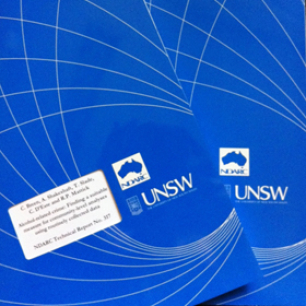NDARC Technical Report No. 85 (2000)
EXECUTIVE SUMMARY
In 1999 the Commonwealth Department of Health and Aged Care (CDHAC) commissioned the National Drug and Alcohol Research Centre (NDARC) to conduct a national trial of the Illicit Drug Reporting System (IDRS) as an expansion to the previous tri-state studies of 1997 and 1998 and the initial trial in NSW in 1996. The aim of the IDRS is to provide a method of monitoring trends in the use of illicit drugs, specifically the use of heroin, amphetamines, cocaine and cannabis. This approach provides a means by which to identify any emerging drug-related trends and potential related harms, as well as identifying areas that may require further investigation.
The National Drug Research Institute conducted the WA component of the 1999 IDRS, with the study conducted in Perth between August and October 1999. As it was the state's first year of inclusion in the IDRS, the WA component consisted of only the core IDRS methodologies. This comprised of:
- Qualitative interviews with 30 key informants. These key informants were individuals employed in health, outreach, law enforcement, research and other professions.
- Analysis of a range of indicator data from survey, health and law enforcement sources.
The data was collated and analysed to identify trends in illicit drug use in WA, and more specifically Perth, during the July 1998 to June 1999 period.
Summary of drug trends in WA: The WA component of the 1999 IDRS identified a number of trends in illicit drug use within the six to 12 months preceding the study.
Heroin: The price and availability of heroin was considered stable throughout the 12 months prior to the study. Reports of increases in the level of recreational use of heroin were made, as were reports of the increased use of heroin by women and young people. Accompanying this younger age of initiation to the use of heroin were reports of a trend towards injection as the initial route of use of the drug. More people were also said to regarded as having become involved in user-dealing practices.
Amphetamines: The major trend identified by key informants in relation to amphetamine use was that there appeared to be a recent re-emergence of its use. It was suggested that amphetamine was readily available, with both purity and price stable. As with heroin, there were reports of more women and young people using amphetamines.
Cocaine: Little information was available from key informants in relation to the use of cocaine among illicit drug users in WA. What information was available from indicator data suggested that the price of cocaine was stable, availability had increased, and purity levels were generally high, with an average purity of 58% for seizures analysed throughout the 1998/1999 financial year period.
Cannabis: Little change, other than the increased use of hydroponic cannabis, was reported in relation to cannabis use in WA. Price was stable with the only difference reported being the discrepancy between price paid for non-hydroponic ('bushweed') as compared to hydroponic cannabis.
Other drugs: The only trend noted in relation to the use of 'other drugs' was the reduced use of Rohypnol among illicit drug users with a shift towards the use of other, more readily available benzodiazepines.
Drug-related issues: A number of trends were identified in relation to drug-related issues over the ten years preceding the study. These included a continued increase in the number of needle and syringes distributed, a general trend of increased numbers of illicit drug-related calls to the ADIS line and an increase in the number or persons participating in WA methadone programs. A general trend of increased opioid-related fatalities was also observed over this time.
More recent trends included a change in the type of crime committed by illicit drug users within the 12 months prior the study and an increased/fluctuating level of police attention towards illicit drug users within the preceding six months. Cannabis-related offences accounted for more of the drug-related charges laid in 1998 than any other single drug type representing 73% of the total number of these charges.
Research Implications: The findings of the WA 1999 IDRS indicate that further investigation may be required in the following areas:
- research to determine the extent of the re-emergence of amphetamine use and identification of the associated harms as a means by which to inform the development of interventions for both regular users and service providers
- an examination of factors influencing the heroin market and research into the efficacy of interventions to reduce the harms associated with heroin use, including overdose
- monitoring the prevalence of cocaine use (by non-injecting routes of administration as well as injection) in WA
- as the vast majority of drug injectors in WA access their needles through community pharmacy, conduct a survey of those accessing chemists to determine drugs used, and add to the information available about emerging trends


